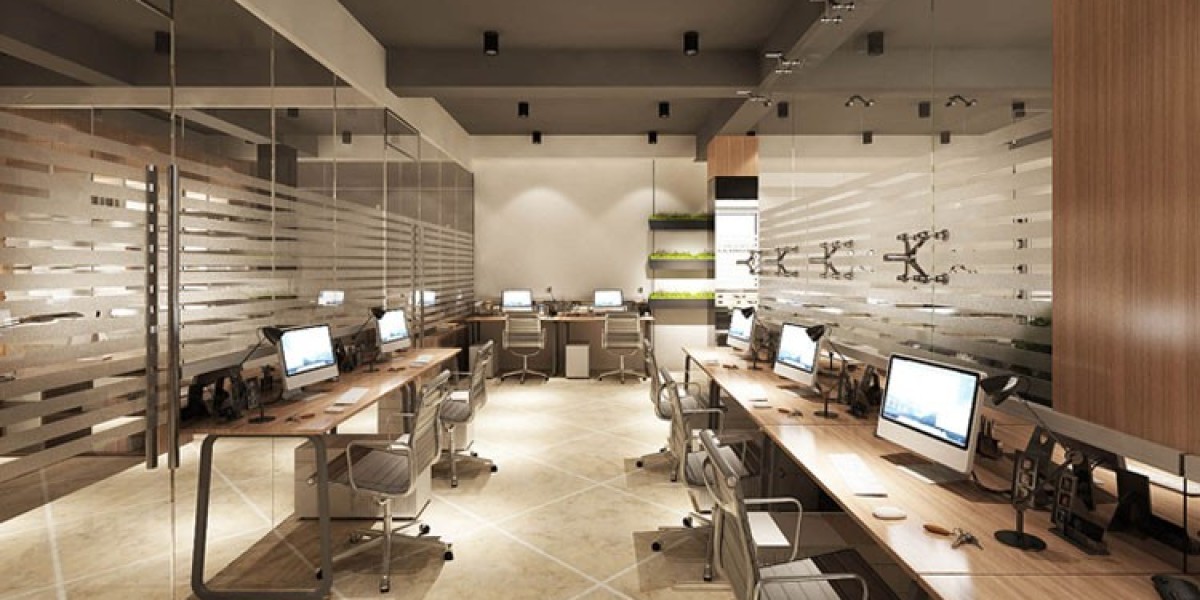Ergonomic office design is focused on creating workspaces that promote comfort, reduce physical strain, and support the well-being of employees. By prioritizing ergonomic principles, businesses can enhance productivity, reduce the risk of workplace injuries, and improve overall employee satisfaction. This article explores the key components of ergonomic office design, its benefits, and how to implement ergonomic solutions in your workspace.
Key Components of Ergonomic Office Design
Ergonomic office interior design revolves around ensuring that the physical environment aligns with the needs of employees. Key components include:
Adjustable Furniture: The core of ergonomic office design is adjustable furniture, especially chairs and desks. Employees should be able to customize the height, angle, and support of their chairs and desks to suit their individual needs.
Proper Posture: Ergonomic design encourages proper posture to prevent strain on the back, neck, and shoulders. This includes seating that promotes an upright posture, proper desk height, and monitors positioned at eye level.
Workstation Layout: The layout of the workstation should allow easy access to essential tools, reducing the need for excessive reaching or twisting. Frequently used items should be within arm's reach to avoid strain.
Movement and Breaks: Ergonomic design promotes regular movement and breaks. This includes incorporating sit-stand desks, encouraging standing or walking meetings, and promoting activities that reduce the effects of prolonged sitting.
Lighting: Proper lighting is a critical component of ergonomics. Adequate lighting reduces eye strain, while adjustable lighting allows employees to control the brightness and direction of light in their workspace.
Supportive Accessories: Ergonomic accessories, such as wrist supports, footrests, and monitor stands, are essential for reducing strain on the body. These items can be used to customize workstations for maximum comfort.
Benefits of Ergonomic Office Design
There are numerous benefits to implementing ergonomic office design in the workplace, both for employees and the organization:
Reduced Risk of Injuries: Ergonomic design helps prevent musculoskeletal disorders, such as carpal tunnel syndrome, back pain, and neck strain. By providing proper support and promoting good posture, businesses can reduce the likelihood of workplace injuries.
Increased Productivity: Comfortable and well-designed workspaces enable employees to focus better and work more efficiently. Ergonomic design reduces discomfort and fatigue, allowing employees to maintain their productivity throughout the day.
Improved Employee Satisfaction: Employees who work in ergonomic environments often feel more valued and supported. This can lead to increased job satisfaction, higher morale, and better retention rates.
Reduced Absenteeism: By minimizing physical discomfort and the risk of injury, ergonomic office design can lead to fewer sick days and lower absenteeism. Employees are more likely to stay healthy and productive when their work environment supports their well-being.
Long-Term Cost Savings: Investing in ergonomic office design can lead to long-term cost savings by reducing the need for medical interventions and time off due to injury. Additionally, businesses can save on workers' compensation claims related to workplace injuries.
Practical Tips for Implementing Ergonomic Office Design
Creating an ergonomic office doesn't have to be complicated or expensive. Here are practical tips for implementing ergonomic solutions in the workplace:
Invest in Ergonomic Chairs
An ergonomic chair is one of the most important investments you can make in office design. Look for chairs with adjustable seat height, backrest tilt, lumbar support, and armrests. The chair should promote a natural sitting position, with feet flat on the floor, knees at a 90-degree angle, and the spine properly supported.
Use Sit-Stand Desks
Sit-stand desks allow employees to switch between sitting and standing throughout the day, reducing the negative effects of prolonged sitting. This promotes better circulation, reduces the risk of back pain, and encourages movement. Make sure sit-stand desks are adjustable so employees can find the most comfortable position for both sitting and standing.
Position Monitors at Eye Level
Monitors should be positioned at eye level to prevent neck strain. The top of the screen should be at or slightly below eye level, and the screen should be about an arm’s length away. Consider using monitor stands or adjustable arms to ensure that monitors can be positioned correctly for each employee.
Encourage Proper Posture
Educate employees about the importance of maintaining proper posture while working. This includes sitting up straight, keeping feet flat on the floor, and adjusting the chair and desk height to ensure a comfortable position. Regular reminders or ergonomic training can help reinforce good habits.
Provide Ergonomic Accessories
Ergonomic accessories, such as wrist rests, footrests, and keyboard trays, can help employees maintain a comfortable and healthy posture. Wrist rests can reduce the risk of carpal tunnel syndrome, while footrests provide additional support for employees who cannot place their feet flat on the ground. Keyboard trays can ensure that keyboards and mice are positioned at the correct height.
Encourage Movement and Stretching
Promote regular movement and stretching throughout the workday. Encourage employees to take short breaks to stand up, stretch, and move around. Consider implementing walking meetings or providing designated spaces for stretching and relaxation.
Use Adjustable Lighting
Proper lighting is essential for reducing eye strain and maintaining focus. Provide adjustable task lighting so that employees can control the amount and direction of light at their workstation. Position monitors to avoid glare from windows or overhead lights.
Create a Comfortable Temperature
The office temperature can have a significant impact on employee comfort and productivity. Ensure that the office is kept at a comfortable temperature and provide options for employees to adjust their personal work environment, such as using desk fans or heaters.
Ergonomic Office Design on a Budget
Creating an ergonomic office doesn’t have to be expensive. Here are some budget-friendly ways to improve ergonomics in your workplace:
Use Affordable Ergonomic Chairs: There are many ergonomic chairs available at a range of price points. Look for affordable options that offer essential features like adjustable height and lumbar support.
DIY Monitor Stands: Use simple solutions, such as stacking books or using boxes, to raise monitors to eye level if purchasing monitor stands isn’t feasible.
Encourage Active Breaks: Promote movement and stretching throughout the workday without investing in expensive equipment. Encourage employees to take short breaks to stand up, walk, and stretch.
Provide Simple Accessories: Affordable ergonomic accessories, such as foam wrist rests or footrests, can make a big difference in employee comfort without breaking the bank.
Offer Ergonomic Training: Educating employees about proper posture and ergonomic practices can lead to significant improvements in comfort and productivity. This can be done through workshops, training sessions, or online resources.
Ergonomic office design is crucial for creating a workspace that supports employee health, well-being, and productivity. By incorporating ergonomic furniture, proper workstation layout, and promoting movement, businesses can reduce the risk of workplace injuries and improve employee satisfaction. Whether through small changes or comprehensive redesigns, investing in ergonomics leads to a healthier, more efficient, and comfortable office environment. As businesses continue to prioritize employee well-being, ergonomic design will remain an essential aspect of modern office spaces.









